For the last couple of years I have had the absolute pleasure of working with a small herd of Domestic Yaks. The herd is made up of one male and three females all between the ages of two and five years old. The male, named Yackie Chan, is the oldest at around five years of age. The three girls, Terryaki, Yacques Cousteau, and Mulan, are ages four, three, and two and a half respectively. The field that they live on is mostly gravel with some rocks and trees and an adjacent holding pen. Prior to my training program the yaks were trained some basic husbandry behaviours including shifting into the holding pen and target training. The urge to implement a voluntary injection training program came up after the first time I witnessed Yackie Chan receive his annual vaccines. He received his vaccines through the use of a dart gun, which suffice to say was not the most positive experience for him or for the animal care team. From then on I developed and implemented an injection training plan to condition the yaks into receiving their vaccines voluntarily.
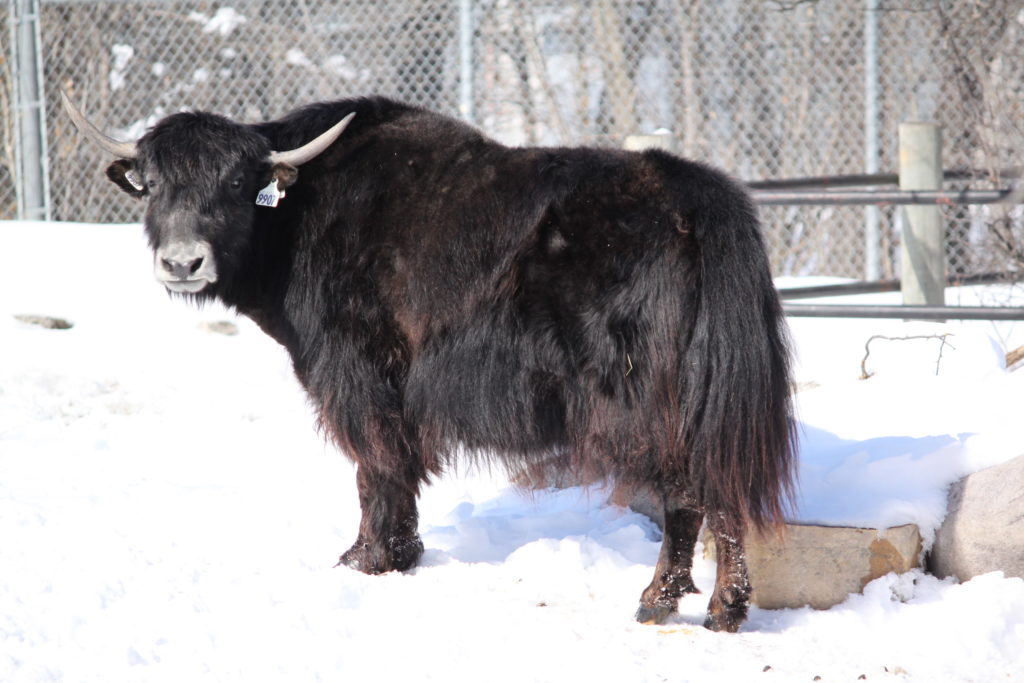
Photo credit: Julia Wilke
Establishing Motivation
I was asked recently by a newer zookeeper, whom was under the impression that hoofstock are harder to train, how one goes about starting the training process. For one thing I do not believe any one animal is “harder” to train than any other. The first key step is to find something that the animal is willing to work for. Unlike carnivores where it is fairly straightforward to use their diet for training purposes, ungulates often (but not always) need something on top of their diet. The yak’s favorite treats are carrots and apples. The other difference in training ungulates is that unless hand raised most ungulates are generally wary of people and need a good deal of conditioning just to get them to start coming over to take treats. In the case of the yaks I had somewhat of a head start as they were already target trained by previous keepers.
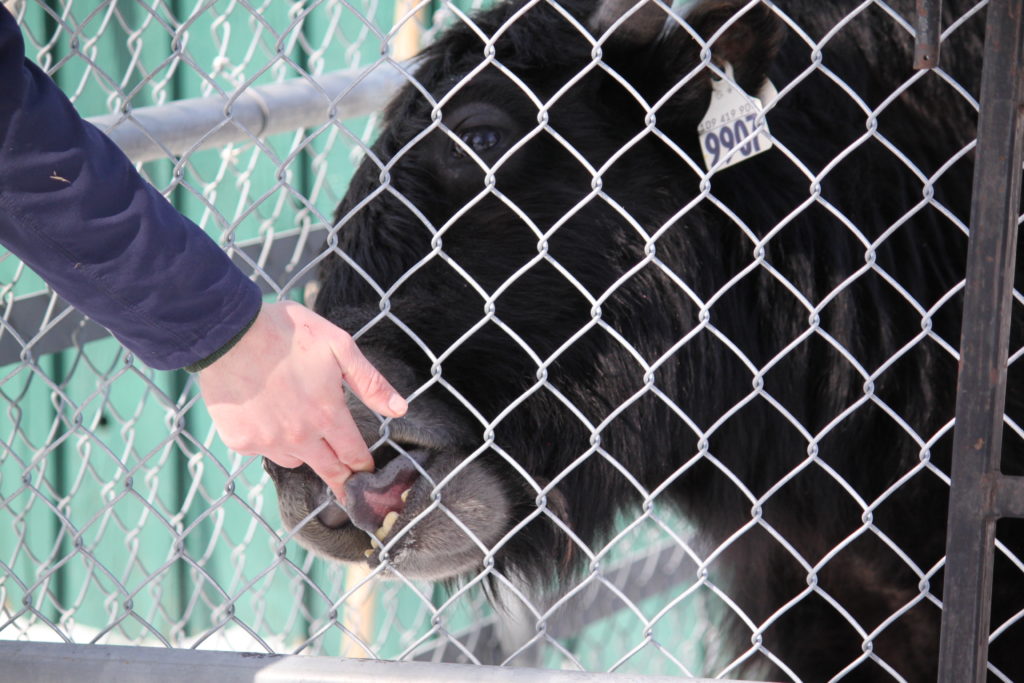
Photo credit: Julia Wilke
Understanding The Herd Dynamics
My first order of business for injection training the yaks was understanding their herd dynamics. Domestic Yaks are very similar to cattle and show a distinct behavioural hierarchy. After watching them over the course of a few days it was evident that to no one’s surprise Yackie Chan was the top dog. This makes sense as male Yaks can weigh up to 580 kg, while females top out around 220-260 kg. Whenever Yackie Chan was around the other girls would give him a wide berth. The second in command was Terryaki. Being slightly older gave her the advantage over the other two girls in that she had reached almost her full size and could easily displace the other girls. As well, her personality could best be described as ‘spunky’ as of all the yaks she is the most curious and rambunctious of the group. After Terryaki came Yacques Cousteau. Cousteau was only slightly older than Mulan but she still had enough extra weight to be able to push the younger yak around. Of all three Cousteau is the most reactive to change often requiring a higher level of desensitization to even the smallest additions. Lastly, the youngest and smallest Mulan was the bottom of the ladder. She was always the last one to shift in for morning feed and would always hang back when I was around. Initially I assumed that Mulan would be the biggest challenge of the entire group. Luckily I was very wrong about that.
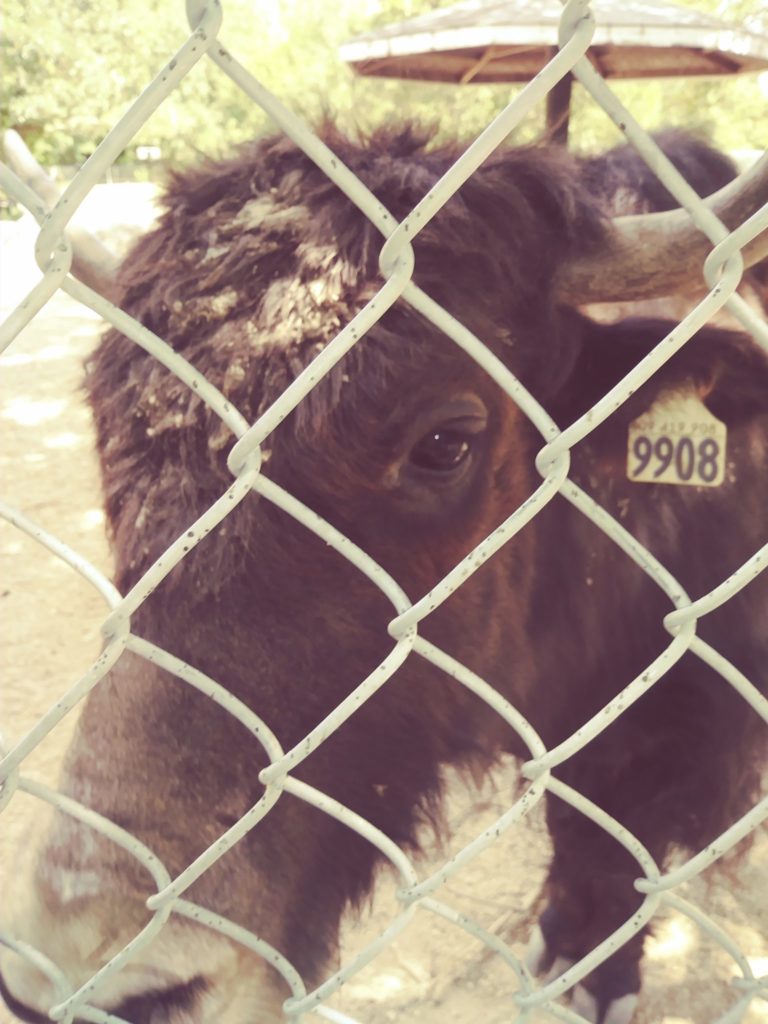
Shift Training
After deciphering their hierarchy the next step in injection training was to begin individual shift training. Up until then the yaks had been shifted as a group into the holding pen. Being highly social animals they did not like being separated from the herd. It required a lot of baiting with carrots but after a while I was able to teach Terryaki that coming into the holding pen by herself was safe. At this point I should note that since Yackie Chan had recently received his injections he was in no way interested in participating in training, which was advantageous for me as the females never had to worry about the big guy pushing them away. Once Terryaki was reliably coming into the pen I would reward her profusely and then bait her back out of the pen using a flake of hay. Once Terryaki was reliably shifting individually I began to start the same process with Yacques Cousteau and Mulan. Eventually after around three weeks of training I was able to shift one at a time in and out of the run reliably. Their were hiccups that had to be worked through, most notably that Terryaki and Mulan would often aggress on each other when trying to shift one out of the run. To fix this I refused to reward them any time their was aggression between the two and eventually they figured out that in order to get delicious carrots they needed to cooperate.
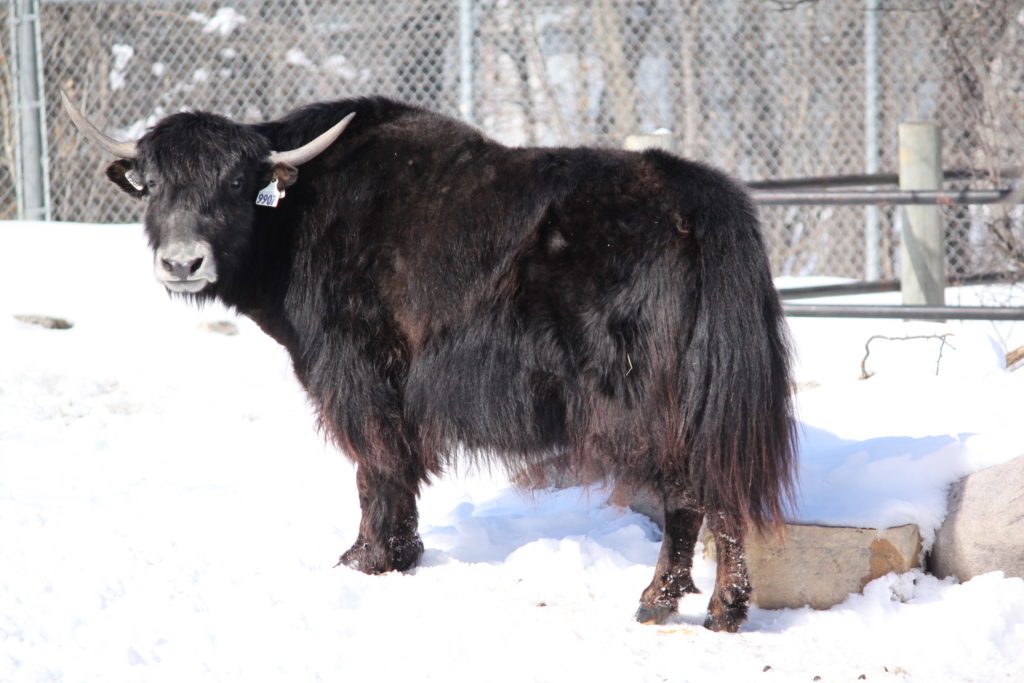
Working on Positioning
Once shifting reliably the next step in injection training was to position them in a way that vet staff could safely inject them. Originally the yaks had been trained to target to an old broom handle, which through trial and error I can confidently say is not the best tool for the job. The main reason is that the animal may associate other things such as rakes, brooms, or even dart guns, with training and this can lead to aversive situations. For sake of ease I switched to hand targeting, rewarding them for touching their nose to my outstretched hand through the fence. Now that they were reliably following my hand movements I was able to position them by a corner in the fence. I can’t stress enough how important it is to use the available surroundings when injection training and training other behaviours. Any time that an exhibit can be used in training it decreases the overall time needed to train a behaviour and can make the animal feel safer.
Poking with a Stick
Now that the yaks were in a good position I could finally begin the “injection” stage of the injection training by introducing a mock pole syringe, aka a stick with a screw taped to the end of it. I started very slowly by first having the stick against the fence while we were doing our regular training. Eventually I began carrying it and then rattling it on the fence always rewarding for calm behaviour. Eventually they were calm enough that I could stick the blunt end of the stick through the fence. The first poke in the shoulder was a monumental occasion for all three females as overall it was not an extremely negative event; Yacques Cousteau did kick the fence and run away the first time but considering her personality she did great. Slowly we worked on our minor approximations until eventually all three were accepting solid pokes from the screw tipped end of the pole. At this point I began calling for other zookeepers and vet techs to come down and be “the poker”. After four months of training Mulan received her first voluntary vaccinations. I was a very proud yak dad.
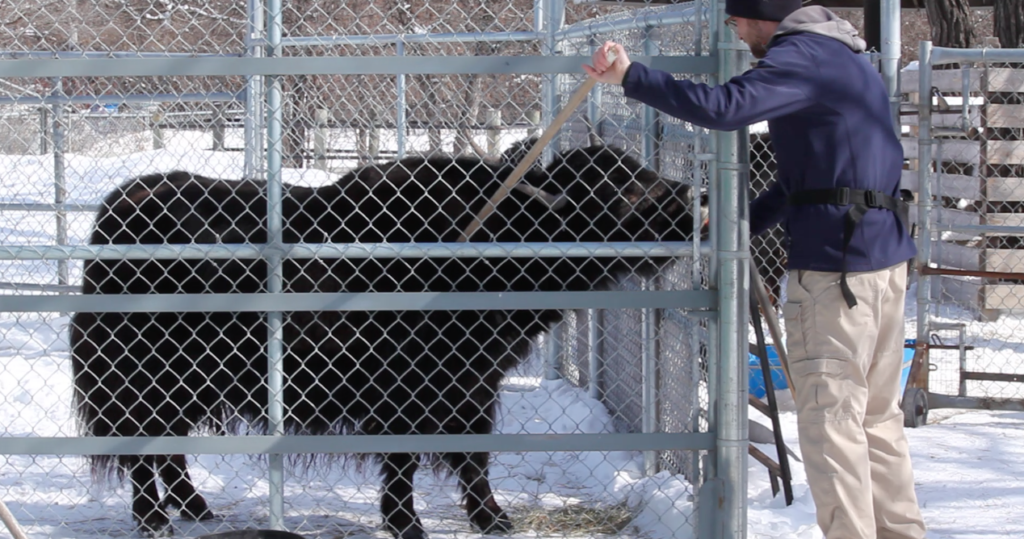
A Proud Yak Dad
The injection training was a success! Two of the yaks have now received vaccinations voluntarily with the other two progressing very well each session. On top of voluntary injections we are now working on face touch, open mouth, and accepting fly spray, all of which are very beneficial from an animal husbandry perspective. Working with the yaks was my first foray into training new behaviours in large ungulates and has been one of the most enriching experiences of my career. They have helped me spread the word to both guests and coworkers that ungulates are not just brown dots standing in a field but are intelligent animals that can figure out complex tasks. All they need is the opportunity to do so.
Further Reading/ Resources
https://www.animaltrainingacademy.com/wp-content/uploads/2016/06/Maggiehandinjection2people1.pdf
http://www.yakshuloche.ch/yaks_comportement.php?langue=4
http://www.ultimateungulate.com/Artiodactyla/Bos_grunniens.html

Hi! Awesome article! I am the primary trainer for a bachelor group of elk at Grandfather Mountain, NC. I have been working on injection training them with a mock pole as well, and I was hoping I could get in touch with you to ask some questions if possible! Thanks 🙂
Hi Susanna, Ive just sent you an email so we can chat more!